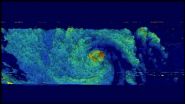(Press-News.org) PHILADELPHIA –A diagnosis of septic shock was once a near death sentence. At best, survivors suffered a substantially reduced quality of life.
Penn Medicine researchers have now shown that while most patients now survive a hospital stay for septic shock, 23 percent will return to the hospital within 30 days, many with another life-threatening condition -- a rate substantially higher than the normal readmission rate at a large academic medical center. The findings are published in the new issue of Critical Care Medicine.
"Half of patients diagnosed with sepsis are treated outside of the Intensive Care Unit at their initial admission," says senior author Mark Mikkelsen, MD, MSCE, associate director of the Medical Intensive Care Unit and assistant professor of Pulmonary, Allergy and Critical Care Medicine at the Perelman School of Medicine at the University of Pennsylvania. "Part of what makes these findings so troubling is that so many of these patients return to the hospital after discharge and that frequently these hospitalizations are due to another life-threatening condition. We have come so far in understanding how to tame the initial infection that we have minimal understanding of what life is like for these patients once they leave the hospital."
Septic shock, the most severe form of sepsis, is the body's response to a severe bacterial bloodstream infection that is often systemic. It can lead to multi-system organ failure and death. It most often affects patients whose immune systems are already compromised by illnesses such as cancer, cardiovascular disease or advanced age. These patient's immune systems simply do not have the ability to fight off such a severe infection.
Mikkelsen and colleagues examined retrospective data on 269 patients admitted to one of three University of Pennsylvania Health System hospitals with a diagnosis of septic shock who were discharged to a non-hospice setting between 2007 and 2010.
In 78 percent of cases, the reason for readmission was related to the initial/unresolved sepsis hospitalization, accounting for 46 percent of all 30-day readmissions. Other common complications included new conditions such as cardiovascular illnesses or blood clots. One out of six readmissions resulted in death or a transition to hospice.
Patients that were readmitted, the researchers found, were more likely to have been hospitalized within the prior 30 days or to have cirrhosis, cancer, or to have had a prolonged hospital stay. The researchers note that further examination of these trends and potential prevention strategies is especially important in light of the potential for Centers for Medicare and Medicaid Services to expand readmission penalties for patients with sepsis in addition to those with heart attacks, heart failure and pneumonia.
"Our hope is that these findings will give a new urgency to the need for better patient education regarding the signs of a recurrent infection and common reasons for readmission in addition to improved discharge planning to keep these patients healthy and from returning to the hospital," Mikkelsen says.
INFORMATION:
Penn Medicine is one of the world's leading academic medical centers, dedicated to the related missions of medical education, biomedical research, and excellence in patient care. Penn Medicine consists of the Raymond and Ruth Perelman School of Medicine at the University of Pennsylvania (founded in 1765 as the nation's first medical school) and the University of Pennsylvania Health System, which together form a $4.3 billion enterprise.
The Perelman School of Medicine has been ranked among the top five medical schools in the United States for the past 17 years, according to U.S. News & World Report's survey of research-oriented medical schools. The School is consistently among the nation's top recipients of funding from the National Institutes of Health, with $392 million awarded in the 2013 fiscal year.
The University of Pennsylvania Health System's patient care facilities include: The Hospital of the University of Pennsylvania -- recognized as one of the nation's top "Honor Roll" hospitals by U.S. News & World Report; Penn Presbyterian Medical Center; Chester County Hospital; Penn Wissahickon Hospice; and Pennsylvania Hospital -- the nation's first hospital, founded in 1751. Additional affiliated inpatient care facilities and services throughout the Philadelphia region include Chestnut Hill Hospital and Good Shepherd Penn Partners, a partnership between Good Shepherd Rehabilitation Network and Penn Medicine.
Penn Medicine is committed to improving lives and health through a variety of community-based programs and activities. In fiscal year 2013, Penn Medicine provided $814 million to benefit our community.
Readmission rates above average for survivors of septic shock, Penn study finds
2014-11-05
ELSE PRESS RELEASES FROM THIS DATE:
High rate of insomnia during early recovery from addiction
2014-11-05
November 5, 2014 – Insomnia is a "prevalent and persistent" problem for patients in the early phases of recovery from the disease of addiction—and may lead to an increased risk of relapse, according to a report in the November/December Journal of Addiction Medicine, the official journal of the American Society of Addiction Medicine. The journal is published by Lippincott Williams & Wilkins, a part of Wolters Kluwer Health.
"Treating sleep disturbance in early recovery may have considerable impact on maintenance of sobriety and quality of life," according ...
Betting on brain research
2014-11-05
Despite great advances in understanding how the human brain works, psychiatric conditions, neurodegenerative disorders, and brain injuries are on the rise. Progress in the development of new diagnostic and treatment approaches appears to have stalled. In a special issue of the Cell Press journal Neuron, experts look at the challenges associated with "translational neuroscience," or efforts to bring advances in the lab to the patients who need them.
"A variety of global impact studies have identified brain disorders as a leading contributor to disabilities and morbidity ...
Risk stratification model may aid in lung cancer staging and treatment decisions
2014-11-05
DENVER – A risk stratification model based on lymph node characteristics confirms with a high level of confidence the true lack of lung cancer in lymph nodes adequately sampled with endobronchial ultrasound-guided transbronchial needle aspiration and classified as negative.
Lung cancer treatment and prognosis is critically dependent on accurate staging that takes into account the extent to which cancer has spread from the primary lung tumor to other locations. Examination of lymph nodes containing lung cancer cells that have spread can be done by surgical removal, ...
Retinal-scan analysis can predict advance of macular degeneration, Stanford study finds
2014-11-05
Stanford University School of Medicine scientists have found a new way to forecast which patients with age-related macular degeneration are likely to suffer from the most debilitating form of the disease.
The new method predicts, on a personalized basis, which patients' AMD would, if untreated, probably make them blind, and roughly when this would occur. Simply by crunching imaging data that is already commonly collected in eye doctors' offices, ophthalmologists could make smarter decisions about when to schedule an individual patient's next office visit in order to optimize ...
NASA's TRMM and GPM satellites analyze Hurricane Vance before landfall
2014-11-05
Hurricane Vance was a hurricane on Nov. 4 when the Tropical Rainfall Measuring Mission or TRMM satellite and the Global Precipitation Measurement (GPM) mission satellite passed overhead and measured its rainfall from space. TRMM and GPM revealed areas of heavy rain within the storm before it weakened to a depression and made landfall on Nov. 5.
The TRMM satellite flew over hurricane Vance on Nov. 4 at 0953 UTC (4:53 a.m. EST). Rainfall derived from TRMM's Microwave Imager (TMI) data collected were overlaid on a 1000 UTC (5 a.m. EST) image from NOAA's GOES-West satellite ...
NASA sees Typhoon Nuri pass Iwo To, Japan
2014-11-05
Typhoon Nuri continued moving in a northeasterly direction passing the island of Iwo To, Japan when NASA's Aqua satellite passed overhead.
The Moderate Resolution Imaging Spectroradiometer or MODIS instrument that flies aboard NASA's Aqua satellite captured a visible picture of Typhoon Nuri on Nov. 5 at 4:10 UTC (11:10 p.m. EST, Nov. 4).
At 1002 UTC (5:02 a.m. EST) a microwave image captured from NASA/JAXA's Tropical Rainfall Measuring Mission or TRMM satellite showed that the low-level center of circulation was beginning to weaken. The strongest thunderstorms had become ...
Interstitial lung disease is a significant risk factor for lung inflammation following stereotactic body radiation therapy for lung cancer
2014-11-05
DENVER – Pretreatment interstitial lung disease (ILD) is a significant risk factor for developing symptomatic and severe radiation pneumonitis in stage I non-small cell lung cancer (NSCLC) patients treated with stereotactic body radiation therapy (SBRT) alone.
ILD is a group of diseases that cause scarring and stiffing of the tissue and space around the air sacs in the lungs, which results in diminished gas exchange. The incidence of ILD among lung cancer patients is higher than in the general population as tobacco smoking is a common risk factor for both. Some ...
Shape of things to come in platelet mimicry
2014-11-05
CLEVELAND—Artificial platelet mimics developed by a research team from Case Western Reserve University and University of California, Santa Barbara, are able to halt bleeding in mouse models 65 percent faster than nature can on its own.
For the first time, the researchers have been able to integratively mimic the shape, size, flexibility and surface chemistry of real blood platelets on albumin-based particle platforms. The researchers believe these four design factors together are important in inducing clots to form faster selectively at vascular injury sites while ...
EARTH Magazine: Tiny ants are heroic weathering agents
2014-11-05
Alexandria, Va. — Earth's abundant silicate minerals are degraded over time by exposure to water, chemical dissolution, and physical and chemical weathering by tree roots and even insects such as ants and termites. Such weathering plays a significant role in decreasing carbon dioxide in the atmosphere, as carbon dioxide is consumed in chemical weathering reactions and the resultant carbonate becomes sequestered in the form of limestone and dolomite.
To study the effects of weathering over time, researchers buried basalt sand at multiple test sites and dug up the ...
Can love make us mean?
2014-11-05
BUFFALO, N.Y. – Empathy is among humanity's defining characteristics. Understanding another person's plight can inspire gentle emotions and encourage nurturing behaviors.
Yet under certain circumstances, feelings of warmth, tenderness and sympathy can in fact predict aggressive behaviors, according to a recent study by two University at Buffalo researchers.
But why?
That an expression of kindness might be manifest as a punch in the nose can leave observers scratching their heads.
The answer is that it's not about anger or feeling personally threatened, says ...




